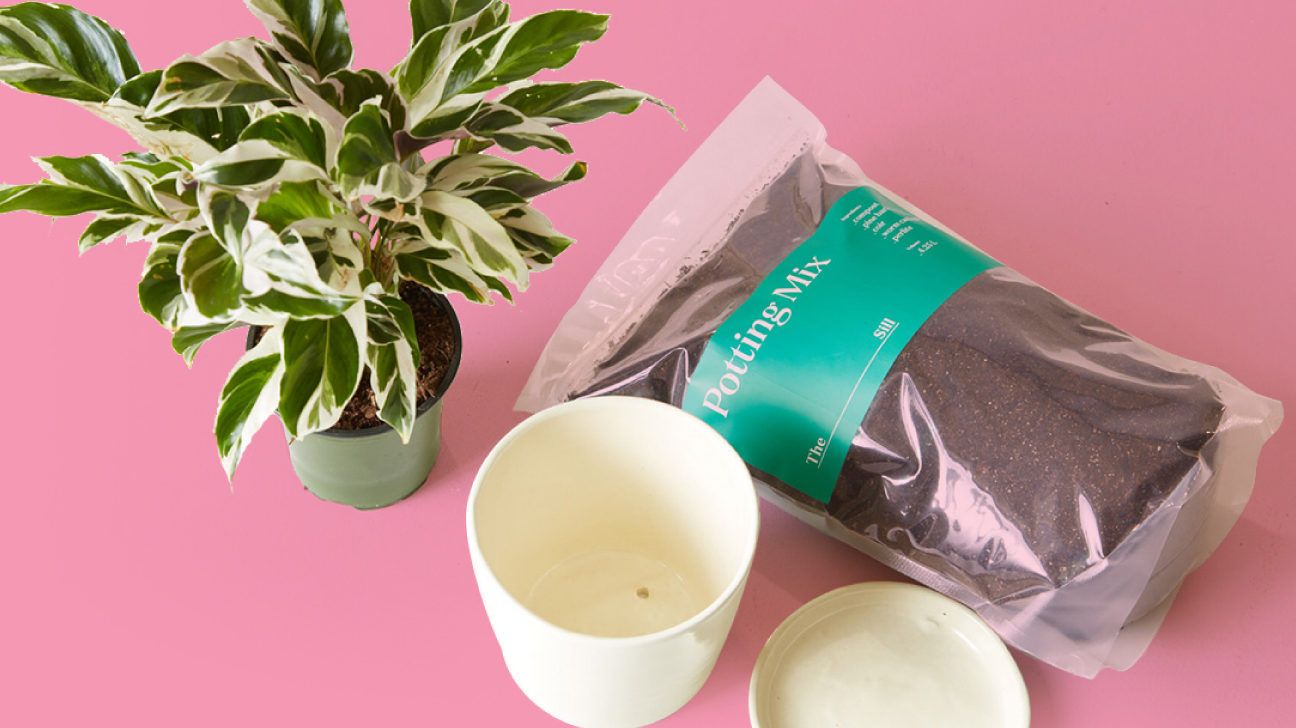Taking your plants out of their old home and placing them in a new one can feel daunting. But that’s why The Sill is here. Repotting your plants is manageable and a way of keeping life fresh.
Repotting does not necessarily mean changing a plant’s planter, but rather, changing its current soil or potting mix. Fresh soil means new nutrients for your plant! It’s also great news if you love your current planter, or if you’re looking for permission to splurge. Your favorite planter, and plant, will last throughout this repotting process.
Not sure whether you need to repot your houseplant or not? Look for one, or a combination, of the following signs:
- roots are growing through the drainage hole at the bottom
- roots are pushing the plant up and out of the current planter
- plant is growing slower than normal (outside of regular dormancy during the winter months)
- plant is extremely top-heavy and falls over easily
- plant and potting mix dries out more quickly than usual, requiring more frequent waterings
- there’s noticeable salt and mineral buildup on the plant or planter
- it’s been more years than you can count on one hand since you’ve repotted this poor plant
Houseplants typically need to be repotted every 12 to 18 months — but some slow growers (like cacti) can call the same pot home for many years.
Pot size is also important because the more potting mix you have, the more you’ll be inclined to water to saturate that mix. If it’s oversaturated, or there’s water in places your plant’s roots don’t reach, the water will sit there — either causing your plant’s health to decline due to overwatering, or attract pesky houseplant pests.
Changing planters?
Try to keep the size no more than 2–3 inches larger in diameter for tabletop planters, and no more than 6 inches larger in diameter for floor planters. Essentially, you don’t want your plant swimming in a sea of potting mix in its new planter. Plants like to be tucked in, nice and cozy, with just a little bit of wiggle room for new growth.
Repotting toolbox:
- your houseplant, of course
- newspaper (to lay down for easy cleanup)
- fresh potting mix
- a watering can, spray bottle, or makeshift water bottle
- scissors or pruners (optional)
- a planter
Directions:
- Turn your houseplant sideways, hold it gently by the stems, and tap the bottom of its current container until the plant slides out. You can give it a bit of help with a couple gentle tugs on the base of the stems if you need to!
- With your hands, loosen the plant’s roots and prune any that are dead or extra long. You’ll want to trim those threadlike roots toward the bottom of the root system, not the thicker roots at the base of the foliage. If your plant is root-bound — roots growing in very tight circles around the base of the plant (with barely any potting mix left in between) — unbind them as best you can and give them a trim. You may find yourself tearing them a little if you cannot finesse them apart.
- Remove about one third or more of the old potting mix. Your plant has removed most of the nutrients in that old mix anyway.
- Pour a layer of fresh potting soil into the planter and pack it down, removing any air pockets. If your planter doesn’t have a drainage hole, create crevices for the extra water to pool into — away from your plant’s roots — by layering the bottom of your planter with a generous layer of lava rocks before adding your soil.
- Set your plant on top of the fresh layer of mix in the planter, making sure it’s centered.
- Add potting mix around the plant until it’s secure. Be sure not to pack too much soil into the planter, as you want the roots to breathe. You’ll want to avoid piling soil all the way up to the top of the planter too. Instead leave some space below the lip of the pot. It’ll be difficult to water your plant properly if the soil is packed in too high, as water will rush off the sides of the pot without ever soaking in.
- Even out the potting soil on top, water well, and let it drain.
If you want to get to know the plants more before you commit, visit us at TheSill.com.

